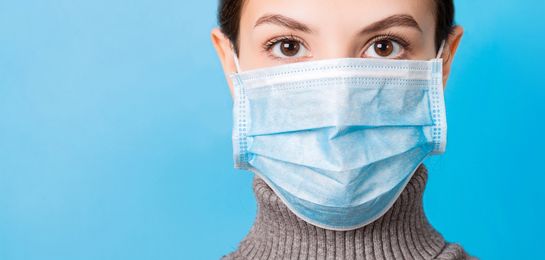Face Masks: What should I wear?
With all of the recent focus on face masks anyone could be forgiven for being confused as to what face masks should be worn in what situation. We thought we'd prepare a short overview of the different types of face masks and provide some information on the effectiveness of each.
What does ASTM Mask Level mean?
ASTM F2100-11 Mask Standards are the North American technical standard for medical face masks based on fluid exposure.
Level 1 – Low Barrier Protection
- Fluid Resistance 80mmHg
- BFE (Bacterial filtration efficiency) > 95%
- PFE (Particulate filtration efficiency) > 95% @ 0.1 micron
Level 2 - Moderate Barrier Protection
- Fluid Resistance 120mmHg
- BFE (Bacterial filtration efficiency) > 98%
- PFE (Particulate filtration efficiency) > 98% @ 0.1 micron
Level 3 – Maximum Barrier Protection
- Fluid Resistance 160mmHg
- BFE (Bacterial filtration efficiency) > 98%
- PFE (Particulate filtration efficiency) > 98% @ 0.1 micron
Level 1 Face Mask
Level 1 Face masks are used in low-fluid cases and general use environments. Level 1 masks offer a fluid resistance of 80mmHg and a BFE of greater than or equal to 95%.
Level 2 Surgical Face Mask
Level 2 Face masks are typically used for moderate barrier protection in a setting where there are low to moderate levels of aerosols, spray and/fluids. Level 2 masks offer a fluid resistance of 120mmHg and a BFE of greater than or equal to 98%.
Level 3 Surgical Face Mask
Level 3 Face masks are typically used for maximum barrier protection in a setting where there are heavy levels of aerosols, spray and/fluids. Level 3 masks offer a fluid resistance of 160mmHg and a BFE of greater than or equal to 98%.
Cloth Face Masks
Cloth Face Masks are a non-medical mask typically made of cotton, gauze, and other fabrics. Filtration effectiveness of cloth masks are generally lower than that of respirators and medical masks. If well designed and used correctly, cloth masks may offer some protection.
In comparison, medical masks are designed and manufactured to protect from droplet infections, splashes and sprays of blood and body fluids.
Respirator Masks
Respirator masks are high filtration masks that are designed to achieve a very close facial fit and a very efficient filtration of airborne particles. They offer protection against transmittable diseases.
They are subject to various regulatory standards worldwide. Below are the some of the most common respirator masks available on the market.
Respirator masks that are certified to the below standards can be anticipated to have very similar functionality to one another. This is based on performance requirements by each standard.
N95 (United States NIOSH-42CFR84)
- PFE (Particulate filtration efficiency) > 95%
KN95 (China GB2626-2006)
- PFE (Particulate filtration efficiency) > 95%
FFP2 (Europe EN 149-2001)
- PFE (Particulate filtration efficiency) > 94%
P2 (Australia/New Zealand AS/NZA 1716:2012)
- PFE (Particulate filtration efficiency) > 94%
Some respirator masks have a one-way valve that reduces breathing resistance. Because the valve is one-way, it does not filter the air on the way out when the wearer exhales. This will not prevent the wearer from potentially infecting others.
References:
ASTM. 2020. Standards for Medical Masks and Protective Clothing. [ONLINE] Available at: https://www.astm.org/standardization-news/?q=features/standards-medical-face-masks-and-protective-clothing-.html. [Accessed 31 July 2020].
WHO. 2020. When and how to use Masks. [ONLINE] Available at: https://www.who.int/emergencies/diseases/novel-coronavirus-2019/advice-for-public/when-and-how-to-use-masks. [Accessed 31 July 2020].
Safework Australia. 2020. Types and uses of face masks. [ONLINE] Available at: https://www.safeworkaustralia.gov.au/doc/types-and-uses-face-masks#picModal. [Accessed 31 July 2020].
Halyard Health. 2020. Choosing the right face mask. [ONLINE] Available at: https://www.halyardhealth.com/industry-news/2019/july/choosing-the-right-face-mask-3-things-to-know.aspx. [Accessed 31 July 2020].
FDA. 2020. N95 Respirators, Surgical Masks, and Face Masks. [ONLINE] Available at: https://www.fda.gov/medical-devices/personal-protective-equipment-infection-control/n95-respirators-surgical-masks-and-face-masks. [Accessed 31 July 2020].
3M. 2020. Comparison of FFP2, KN95, and N95 and Other Filtering Facepiece Respirator Classes. [ONLINE] Available at: https://multimedia.3m.com/mws/media/1791500O/comparison-ffp2-kn95-n95-filtering-facepiece-respirator-classes-tb.pdf. [Accessed 31 July 2020].

